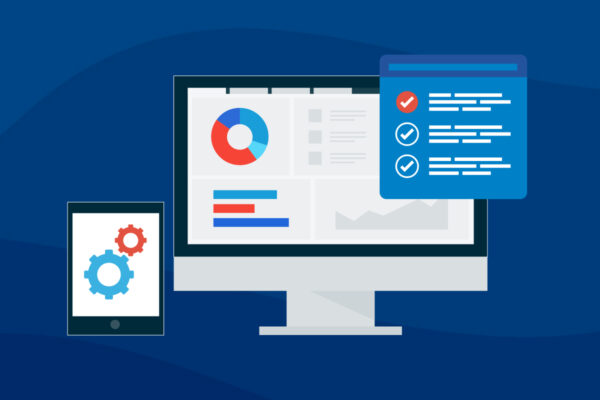What Is Business Continuity?
In the current bustling realm of modern businesses, the clock never stops ticking. Today, keeping your or your clients’ business running online 24/7/365 without any downtime has become less of a competitive advantage and more of a necessity. However, ensuring continuous business operations is not an easy task, especially with the increasing threat of cyberattacks.
Through this blog, we’ll explore the core components of business continuity, its benefits and how organizations can ensure continuity of their operations with a solid business continuity strategy.
What is business continuity?
Business continuity is an organization’s capability to maintain its critical operations during and after a potential operational disruption. It involves all the procedures, processes and activities that are in place to keep operations going without a hitch. In other words, business continuity can also be considered a practical approach to guaranteeing your organization can continue business as usual no matter what comes your way, whether it’s a cyberattack, power outage or any other disruption.
What is the goal of business continuity?
The primary goal of business continuity is to ensure that the critical functions of your business continue both during and after unexpected situations. It’s like having a solid plan to prevent considerable downtime or chaos during disruptions. With business continuity, the focus is not just on getting through such challenges but also on staying successful in today’s unpredictable business landscape.
Why is business continuity important?
Business continuity is crucial for businesses because it’s like having a safety net that prevents disruptions from turning into disasters. The business world is fraught with uncertainties today — from cyberthreats to natural disasters — and without a solid plan, businesses can come to a grinding halt. Some of the notable benefits of business continuity are:
- Keeps the doors open: Business continuity ensures that your organization continues its critical functions, avoiding long periods of downtime that could result in financial losses.
- Preserves reputation: It helps maintain your reputation by showing customers, partners and stakeholders that your business is resilient, reliable and can weather unexpected challenges.
- Protects data: In this digital age, data is worth more than gold. Business continuity safeguards your mission-critical data, preventing loss or compromise during disruptions.
- Compliance assurance: Many industries require businesses to have continuity plans, and adhering to these standards helps businesses avoid legal issues.
- Ensures employee safety: It’s not just about the bottom line; it’s also about the people. Business continuity plans often include measures to ensure the safety and well-being of employees during crises.
What is the difference between business continuity and disaster recovery?
The aim of both business continuity and disaster recovery is to keep operations running in the event of adversities. While they complement each other, their functions are not the same and focus on different aspects.
Business continuity: Business continuity is broad and all-encompassing, intending to keep the entire business operational during and after a disruption. It is a more proactive concept and involves the processes and procedures an organization must implement to ensure the continual operation of mission-critical functions. It includes every aspect of an organization, including its employees, communication channels, physical and IT infrastructure, partners and more. It also comprises specific and pre-determined activities and responsibilities that must be undertaken when a disaster strikes.
Disaster recovery (DR): While business continuity’s primary focus is on the organization, disaster recovery zeroes in on the infrastructure (like IT infrastructure), more specifically on the restoration of mission-critical applications and data. The main objective of disaster recovery is to minimize data loss and restore functionality. It is thus more reactive and immediate, unlike business continuity, which is proactive and long-term.
Today, organizations unify these two components into a comprehensive strategy called business continuity and disaster recovery (BCDR), which brings together people, processes and technologies to restore operations and continue business in the event of a disaster. Read more about the significance of BCDR here.
What is a business continuity plan (BCP)?
A business continuity plan (BCP) is essentially a playbook on how your business will continue to operate when faced with disruptive events. It’s a well-thought-out, step-by-step guide outlining steps and procedures to ensure that critical functions don’t hit a roadblock during unexpected events.
A business continuity plan involves identifying potential risks, assessing their impact and creating strategies to keep the operations running smoothly. An ideal business continuity plan covers a range of scenarios — from natural disasters to cyberattacks — and lays out the steps to be taken during and after such events. It’s thus more than just a plan; it’s your business’s insurance policy for a resilient, uninterrupted future.
Learn more about the business continuity plan here.
What are the key components of business continuity?
Now, let’s look at the key components that collectively form the comprehensive framework for business continuity. These components guide businesses from risk identification and response to ongoing preparedness and recovery, ensuring a well-rounded strategy for navigating the uncertainties of the business landscape.
Risk analysis and management
Risk analysis and management is a critical component of business continuity. It involves identifying potential disruptions that could disrupt operations — whether it’s a cyberattack, natural disaster or any other disruptive event. Organizations must then evaluate the likelihood of such disruptions and devise strategies to manage or mitigate them. Understanding all the potential risks allows businesses to prioritize and proactively focus their efforts on the most critical areas. It will also help them ensure their continuity plans are tailored to real-world threats.
Incident response and crisis management
When disruptions occur, an incident response and crisis management plan serves as the blueprint for what to do next. It outlines the immediate steps to be taken, who is in charge of what and how to effectively manage the situation. A well-defined incident response and crisis management plan ensures a swift and coordinated reaction, minimizing chaos and laying the groundwork for a smooth recovery.
Continuity planning, training and testing
Continuity planning involves creating a roadmap for how to keep essential functions running. Training ensures everyone knows their role, and testing verifies the plan’s effectiveness. Ongoing planning, training and testing are the backbone of preparedness, ensuring that the business can execute its continuity plan seamlessly when disruptions happen.
Disaster recovery planning, training and testing
Disaster recovery planning involves strategies for quickly recovering and restoring mission-critical systems — for instance, IT systems — after a disruption. In this tech-driven world, ensuring the rapid recovery of critical systems is paramount for reducing downtime and maintaining operational continuity. Regular training and testing ensure your team can execute the disaster recovery plan efficiently.
What is business continuity management (BCM)?
Business continuity management is a comprehensive process that aims to identify and plan for potential threats to an organization, involving the holistic management of procedures, personnel and resources to guarantee continued operations. In fact, it’s about more than just responding to crises; it’s a forward-thinking philosophy that starts with identifying potential risks, assessing their impact and then crafting robust plans to mitigate those risks.
Business continuity management also involves continuous testing, updating and refining of strategies to ensure they stay effective in the face of evolving challenges. In essence, business continuity management helps in developing a robust framework for effective response in the event of disasters and, in turn, organizational resilience.
What are the benefits of business continuity management?
Let’s look at some tangible benefits that organizations gain by embracing robust business continuity management.
- Minimizes downtime and unwanted costs: Business disruptions are not just inconvenient; they can be costly. By having robust continuity plans in place, organizations can minimize downtime, ensuring that operations continue smoothly even in the face of unforeseen events. This means less revenue lost, fewer productivity hits and an overall reduction in unwanted costs.
- Supports business and operational resilience: Resilience is the ability to bounce back from challenges, and that’s exactly what business continuity management provides. By identifying risks, developing strategies and instilling a culture of preparedness, organizations become more resilient. They can navigate disruptions with minimal impact, ensuring the business doesn’t just survive but thrives in the long run.
- Upholds reputation and customer relationships: Business continuity management safeguards an organization’s reputation by demonstrating reliability. Customers and stakeholders appreciate businesses that can weather storms without a significant impact on services. This trust not only upholds the organization’s image but also fosters stronger customer relations.
- Meets compliance and regulatory requirements: Many industries have specific regulations and compliance standards. Business continuity management ensures that organizations meet these requirements. This not only helps avoid legal complications but also builds trust with clients who rely on the organization to handle their data and services responsibly.
- Enhances employee morale and confidence: Employees are the backbone of any organization. Knowing that there’s a well-thought-out plan in place to handle disruptions boosts their morale and confidence. It fosters a sense of security and loyalty, contributing to a positive work environment.
- Facilitates quick decision-making: Business continuity management equips leadership with predefined strategies, allowing for rapid decision-making. This agility is key to steering the organization through turbulent times efficiently.
Ensure business continuity with Datto
If you are an MSP looking to ensure the business continuity of your clients or an organization looking to ensure your own operational continuity, look no further. No matter how diverse and unique the IT environment is, Datto Unified Backup can cater to all your business continuity and disaster recovery needs and help you or your clients continue business as usual, even during unforeseen disruptions. Protect on-prem and virtual environments, clouds, SaaS applications and remote endpoints, all with a single unified platform and single user-intuitive interface.
Want to experience the robust capabilities of Datto Unified Backup firsthand? Get a demo now.




